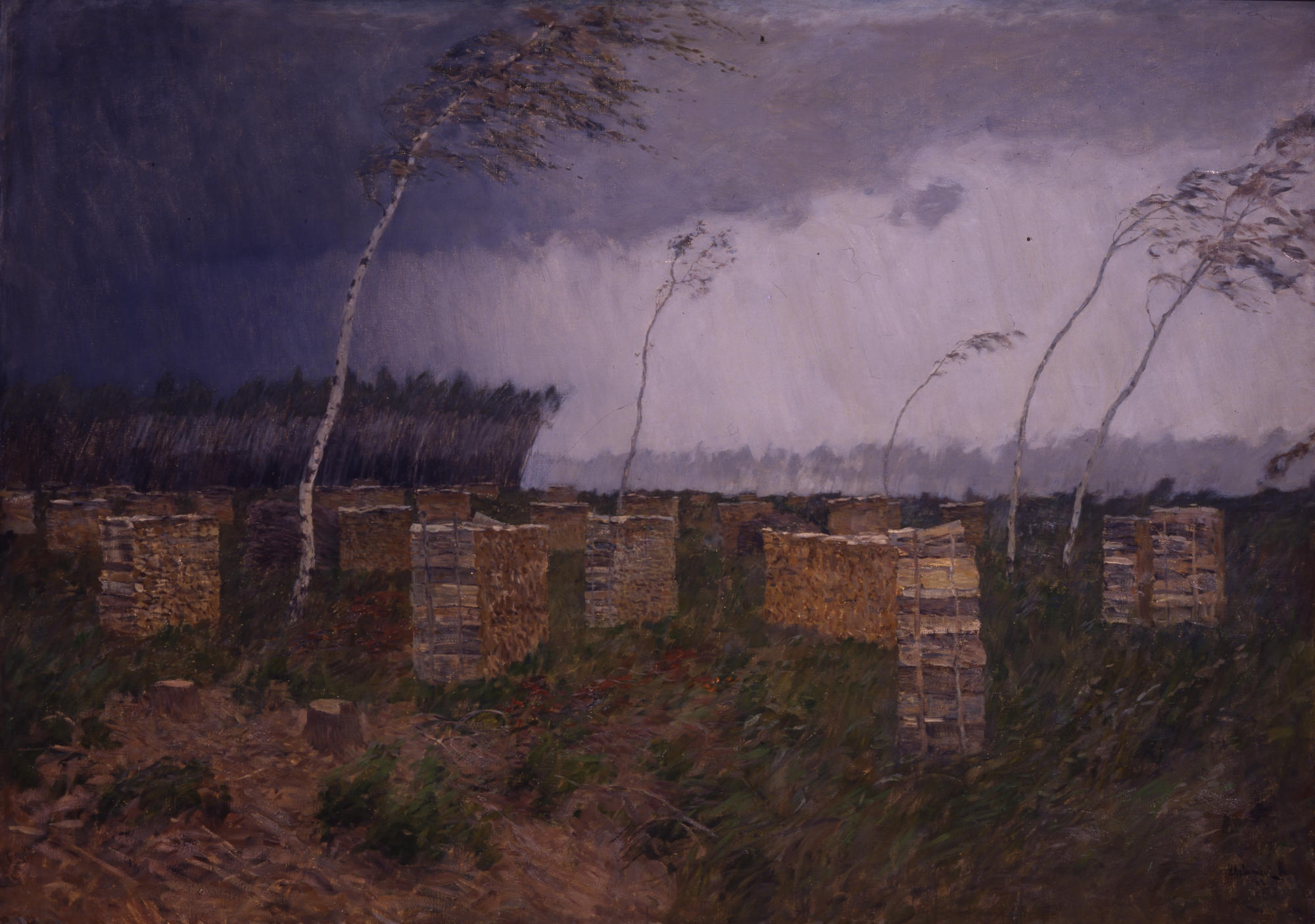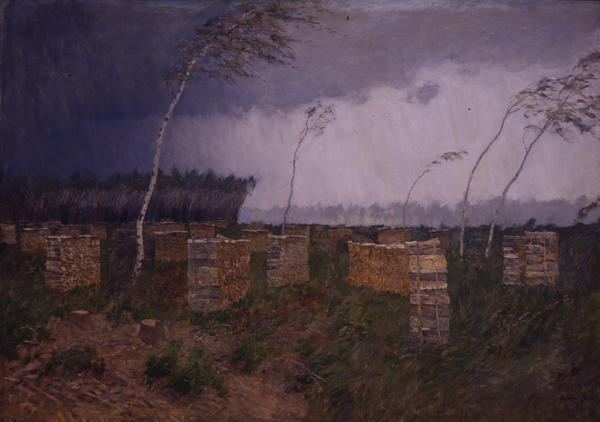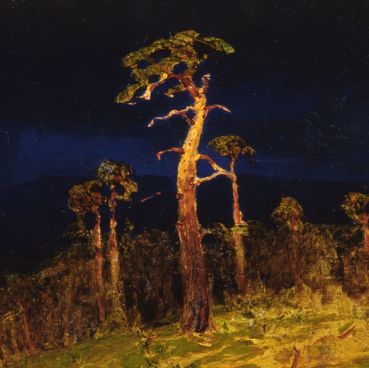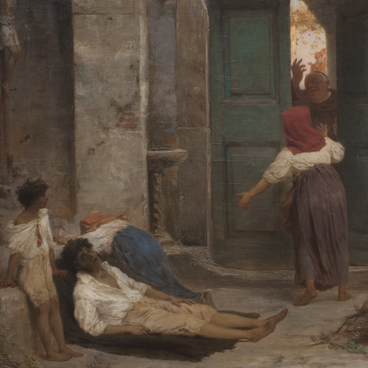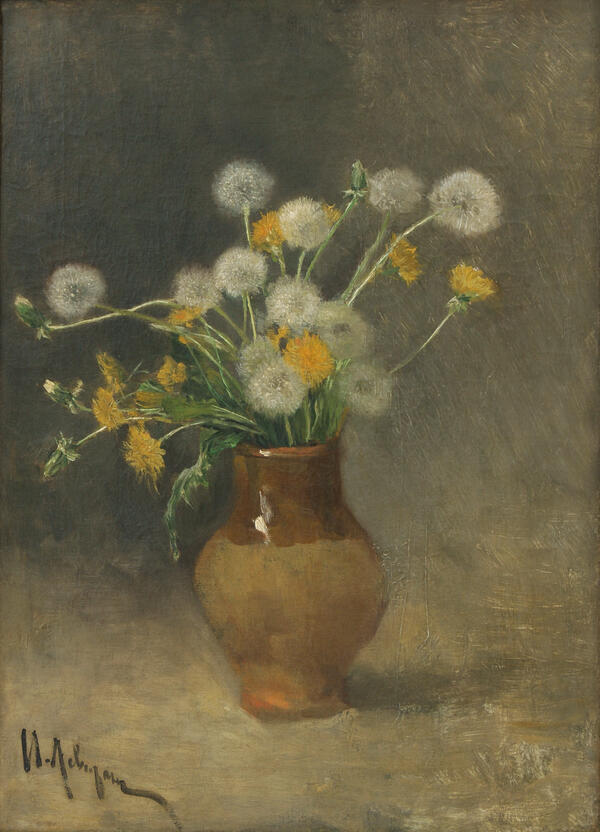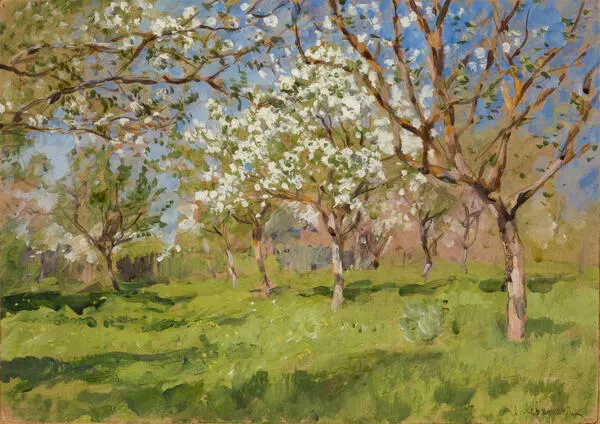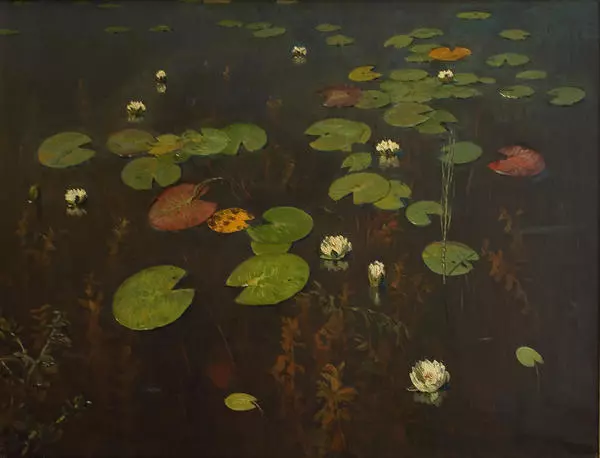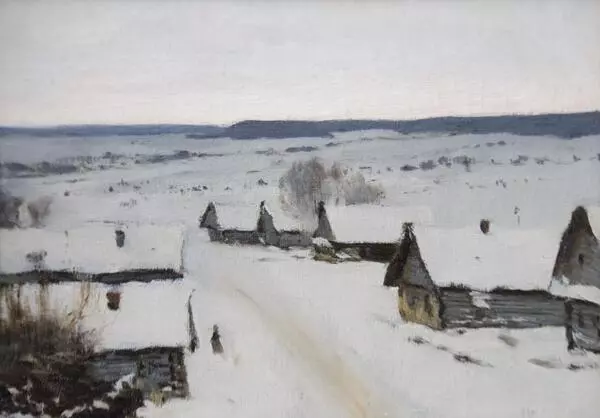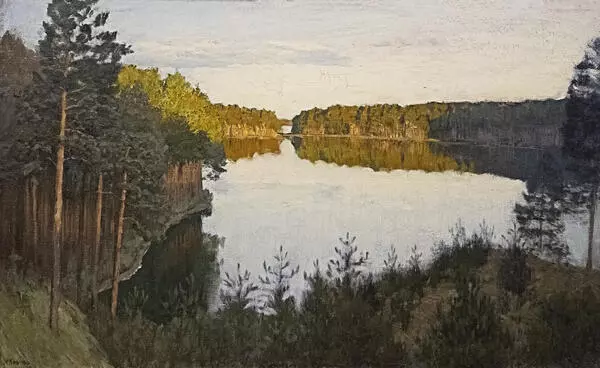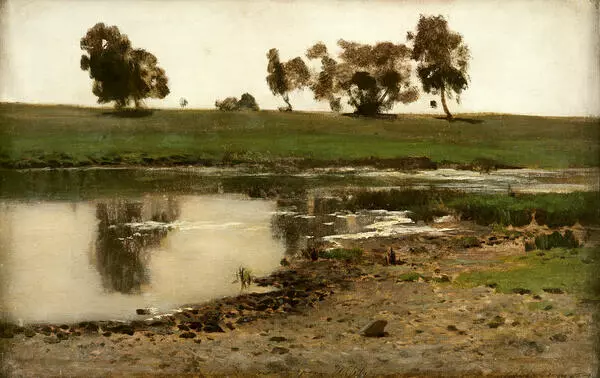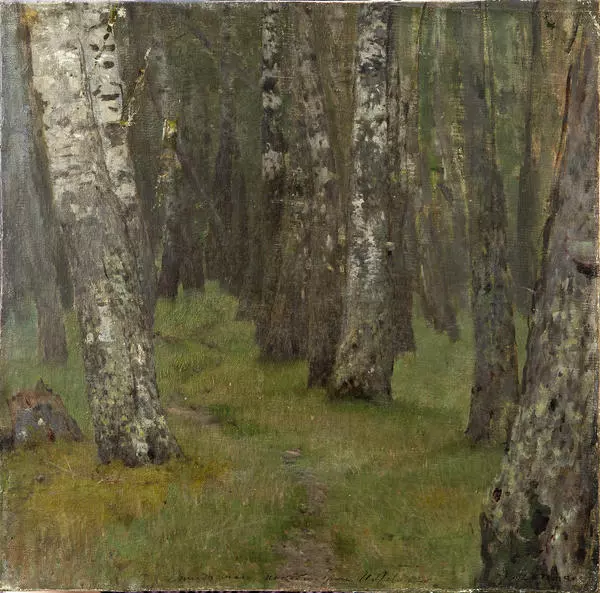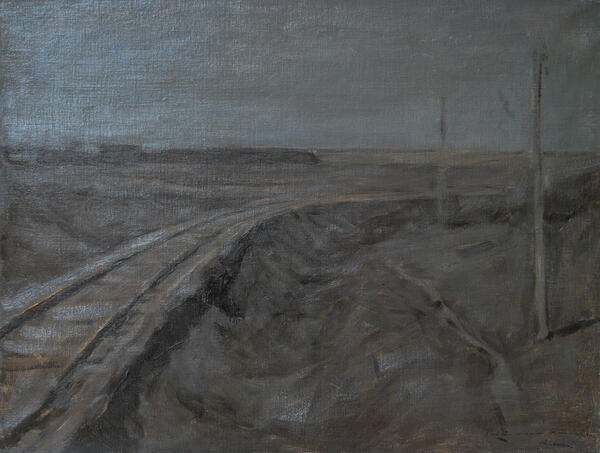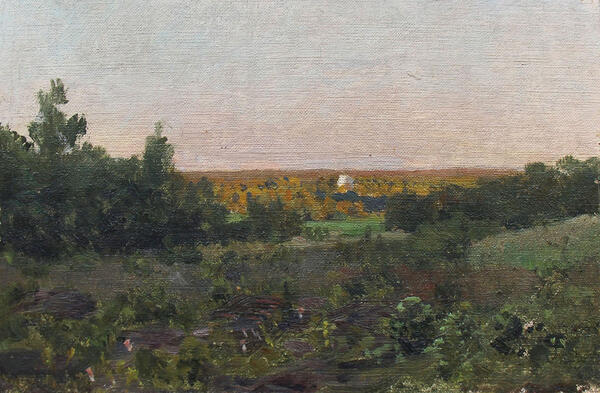Landscape painting, according to an apt remark by critic Vladimir Stasov, is ‘one of the loftiest glories of Russian art long recognised in the rest of Europe’. Pictures by Savrasov, Shishkin, Vasiliev added Russian landscape to Russian art. Isaac Ilyich Levitan carried on those traditions. His landscapes are often called ‘mood landscapes’. Levitan’s works are not just images of nature but an expression of a person’s inner state. The Tempest. Rain painted in 1899 is one of the last big works by that outstanding Russian landscapist. A cold autumn sky. Impending storm. Grey raggy clouds. One cloud is lead-black and heavy with cold mist; it is spreading across the sky and has already covered half of the sky with its dense gloom. The rain falling in slanting jets looks like a curtain closing off the expanse behind it. The wind is so strong that is seems ready to uproot the dark grass and scatter around the fresh yellowish sawdust. Thin birch trees in the foreground are bent low by powerful gusts of wind. Their outlines are repeated by bowing birch trees of the forest in the background. Only dead tree stumps and neat stacks of wood seem to be able to counter the might of the wild element. Under the cold rain, they look as dejected and orphaned as the surviving trees.
‘None of the artists before Levitan had conveyed the immensity of Russian weather inclemency with such distressing force. It is so grave and solemn that is perceived as grandeur’, — wrote author Konstantin Paustovsky. The artist enhances his narrative with painting and compositional means. The picture is dominated by a heavy, cold rusty-grey tone. Even warm colours are made subdued.
The grass and the sawdust are painted with unruly broad dabs creating the impression of the gusty wind having scattered everything around. For the birch forest on the horizon and for the sky, the artist’s brush, on the contrary, is light varying from dark, almost black to light-grey tones. The picture becomes panoramic, it is elongated; the bending trees do not direct our eye into the depth but along the picture.
The painting was first shown at the 27th Itinerant exhibition in 1899. It immediately attracted the attention of the public with its unusual subject and expressiveness of interpretation. “Levitan”s Thunderstorm is an enchanting piece of work”, Sergey Diaghilev noted in the Mir Iskusstva magazine. He considered it to be one of the most significant works at the exhibition. A Mr. X, a reviewer from the Syn Otechestva magazine wrote that “nature in Levitan”s picture is not an indifferent nature glowing with eternal beauty. Some latent power about to burst free is felt in it, and this anticipation of the future thunderstorm, unravelling of the hidden secret imparts to Levitan”s nature a kind of nervousness that is communicated to the viewers”.
